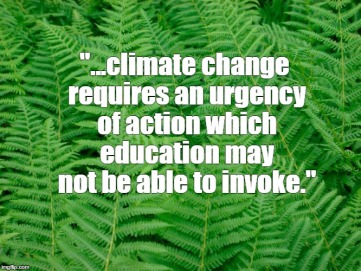One of my Bain managers once told me that our core skillset is HR. If you think about it, it makes complete sense – consulting is completely dependent on people, so recruiting, developing, and retaining talent is paramount to delivering results for our clients.
You know where else people are paramount? Schools.
Study after study has proven that teachers are the single greatest factor that influence student outcomes in a school. And yet, aspiring teachers are left to flounder.
I always say I want to help develop and implement program that improve student outcomes, especially in under-resourced areas. I want to acknowledge that “Rethinking Teacher Recruitment” by Zachary Hermann (available here) inspired this post and spurred my ideas.
Why can’t we think about expanding the teaching pipeline through internships?
Almost every other industry – from tech, consulting, finance, to law, medicine, and journalism – offer internships of some kind. But barring a few non-profits, it’s difficult for undergraduate students to get a true exposure into the teaching industry. Given the lack of quality candidates, let’s make it easier.
Let’s allow students to experience what it’s like to be a teacher for a few months. Yes, schools don’t operate during the summer – but summer schools do. Plus, schools only close in mid-to-late June, whereas most universities let their students out by May. If schools want to get quality candidates in their doors early, they should target those who want to fill their summer with productive experiences.
I see a couple of primary benefits of such exposure:
- Students will realize how challenging it is to be a good teachers – and how much one can learn through the experience.
- They’ll discover how rewarding and impactful it can be to change lives at the age of 22.
- If students perform well, they can receive a contingent job offer at the end of their internship period – locking in talent that might get otherwise drawn to careers that recruit aggressively and early.
This strategy can be even more impactful if it’s coupled with an earlier recruitment cycle, which would allow education to compete for talent with other fields.
To make these internships even more attractive and powerful, schools can invest in professional development for these students. As Teach for America has established, “Teacher as Leadership” can be a true paradigm shift. The skills you get from managing stakeholders both inside and outside a classroom can be leveraged across industries. Thus, much like consulting, teaching can be offered as a “try before you buy” stepping stone; if you enjoy the role, you can consider a long-term career. If you don’t, you’ve gained a valuable skillset that can make you effective in many other potential career options.
As a result, we can expect a 2-year commitment, and then give them pay raises, additional opportunities (like managing other teachers), and exposure / experience that can substitute for pay. More development ideas include sending teachers to conferences and helping them develop a network. By creating opportunities to let them talk about their impact, not only will they learn and grow, they will also inspire others to follow in their path.
The biggest differences between this idea and the TFA model are the focus on getting to high-achieving students early (before senior year) and lack of emphasis on high-need placement. While the need for quality teachers is definitely more significant in more under-resourced schools and communities, expanding the teaching pipeline does not imply focus on any particular segment of schools.
In fact, as more young people begin to see teaching as a viable career option, they may choose to work in schools with higher needs. Even if they do not, they will have a high impact on their own classrooms and fulfill a significant need in society.


